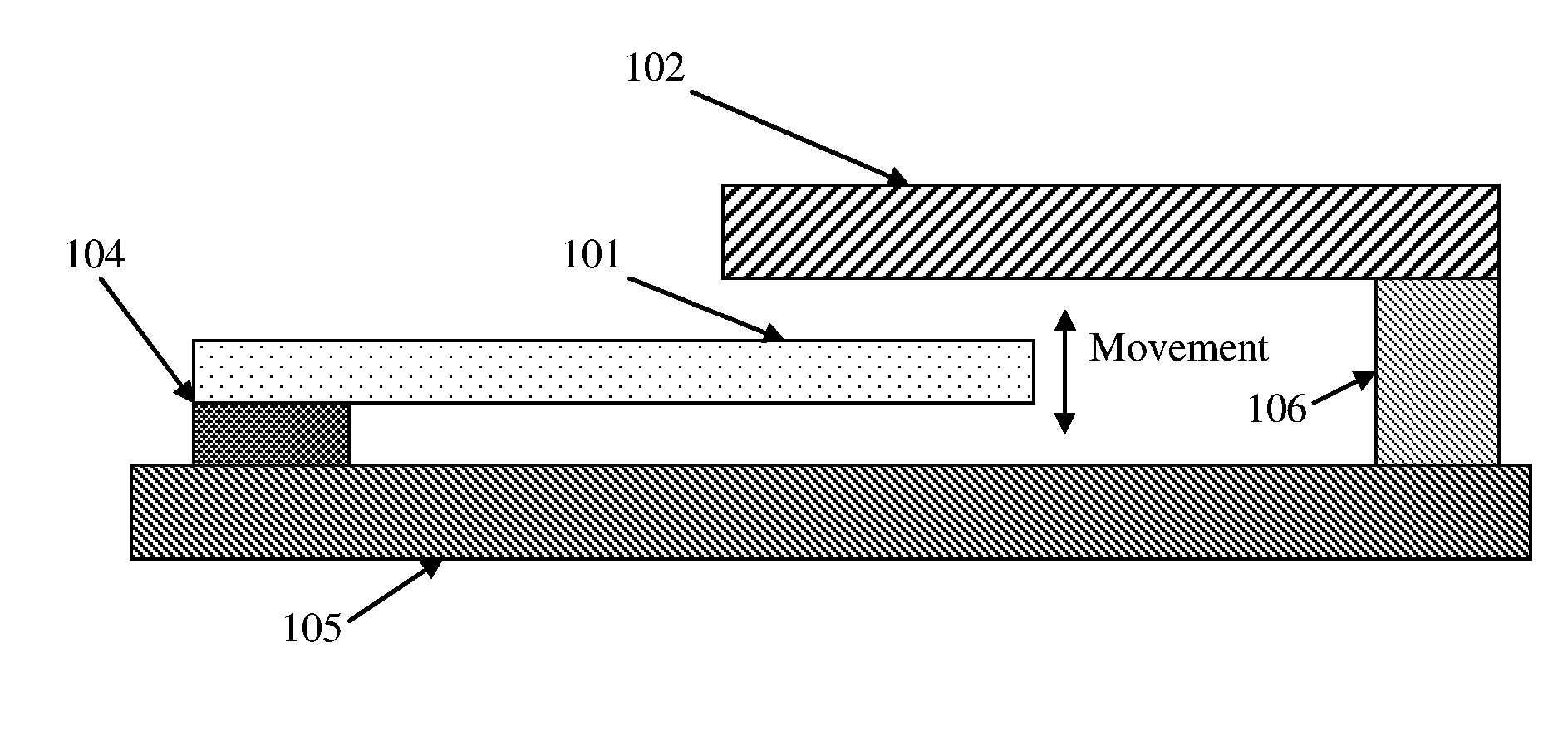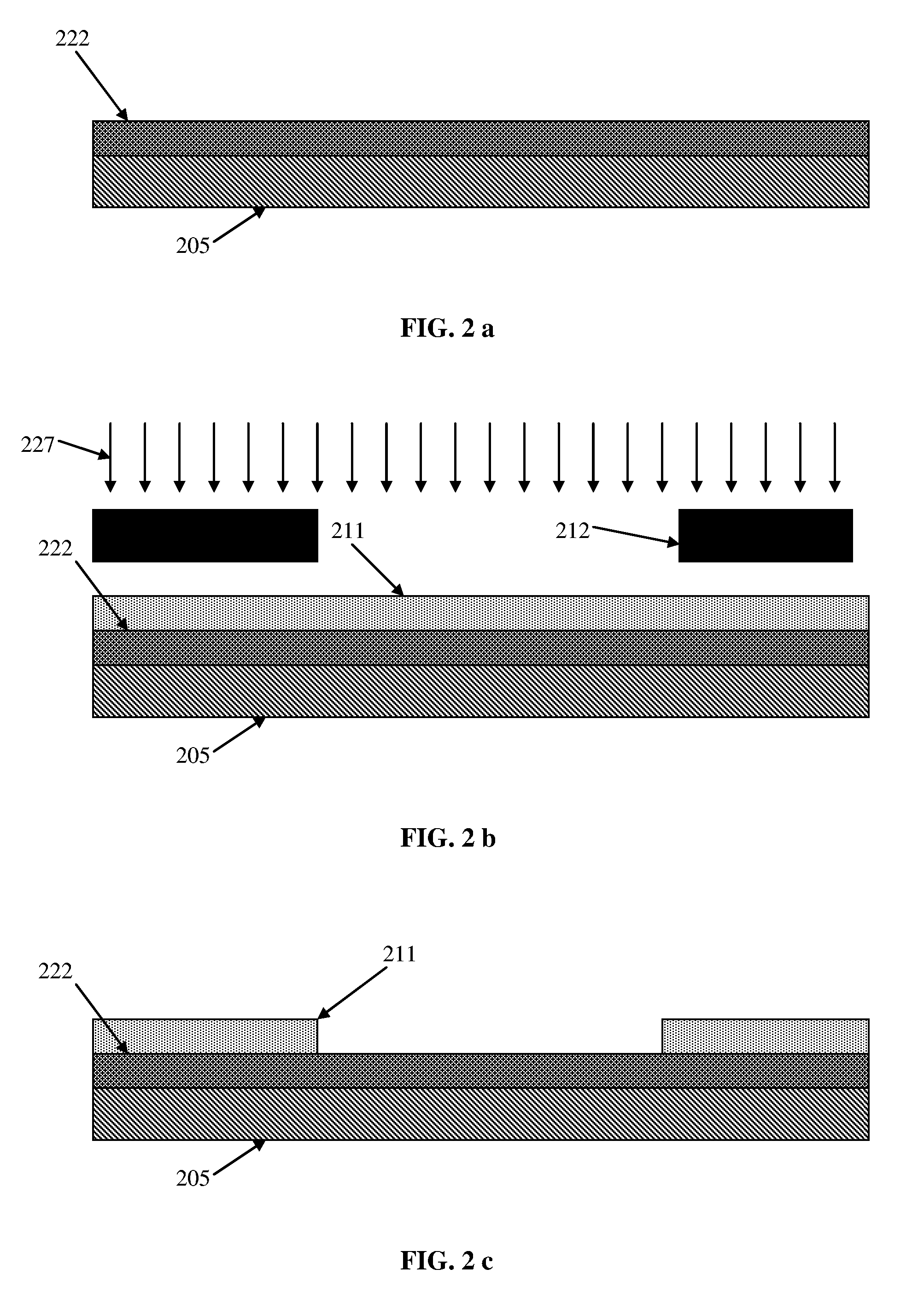Shape memory alloy MEMS heat engine
a memory alloy and heat engine technology, applied in the direction of machines/engines, non-positive displacement fluid engines, hot gas positive displacement engine plants, etc., can solve the problems of inability to achieve practical engineering applications, the theoretical upper limit of efficiency (carnot efficiency) approaching only 4-5%, and the design of most heat engine designs are extremely complex. , to achieve the effect of reducing friction forces, increasing the possible operation frequency of sma-mems heat engine, and easy scaling of the designed devi
- Summary
- Abstract
- Description
- Claims
- Application Information
AI Technical Summary
Benefits of technology
Problems solved by technology
Method used
Image
Examples
second embodiment
[0026]Standard MEMS fabrication procedures known to one of ordinary skill in the art may be employed for creating the TiNi thin film heat engines. Specifics of the steps in the fabrication procedures are given below, which is the second embodiment as a vertical lifting mechanism.
[0027]Prior to deposition of the TiNi layer, an oxide layer 222 is deposited using e-beam evaporation on a silicon wafer 205 or other suitable substrate, followed by photoresist 211. The photoresist is then exposed to radiation 227 typically ultraviolet light and developed. The photoresist pattern 212 consists of windows ranging from several microns to 1 mm in width and tens of microns to 1 mm in length.
[0028]The TiNi or other suitable shape memory alloy thin film is then deposited 221 on the silicon dioxide layer at an elevated temperature. The TiNi thin film can be deposited using either a sputtering procedure, or with a co-evaporation procedure in which titanium and nickel are deposited using e-beam and / o...
third embodiment
[0030]In a third embodiment an applied load from a spring is set to allow the engine to operate. This design is shown in FIG. 4 and FIG. 5. In FIG. 4 the load “q” applied to the cantilever tip allows the displacement “v” of the beam when supplied with a hot and cold source (in this case the anchor). As shown in FIG. 5, this second design harnesses the stress strain relationship of the shape memory alloy by the attached spring 515 at the end of the cantilever beam 501, and a “zip-strip” type mechanism 516 and 527 for mechanically applying a force to the cantilever beam. The “zip strip” mechanism allows a stress to be applied to the cantilever beam 501 after processing. A secondary MEMS device or probe moves the ring 517 which moves the serrations 516. The serrations 516 move past a set of herring bone beams 527 allowing motion in only one direction. This results in a stress being applied to the beam 501. Spring 515 may be added to add greater flexibility in the force applied to the b...
PUM
| Property | Measurement | Unit |
|---|---|---|
| temperature | aaaaa | aaaaa |
| thickness | aaaaa | aaaaa |
| thick | aaaaa | aaaaa |
Abstract
Description
Claims
Application Information
 Login to View More
Login to View More - R&D
- Intellectual Property
- Life Sciences
- Materials
- Tech Scout
- Unparalleled Data Quality
- Higher Quality Content
- 60% Fewer Hallucinations
Browse by: Latest US Patents, China's latest patents, Technical Efficacy Thesaurus, Application Domain, Technology Topic, Popular Technical Reports.
© 2025 PatSnap. All rights reserved.Legal|Privacy policy|Modern Slavery Act Transparency Statement|Sitemap|About US| Contact US: help@patsnap.com



